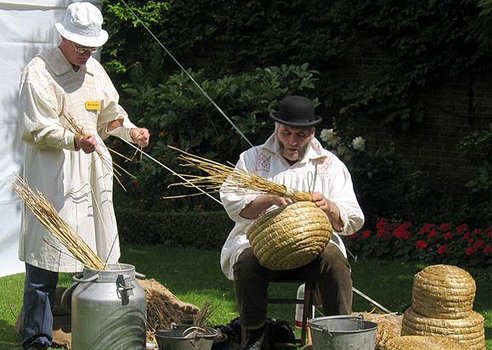Reading time: Less than 1 minute
Increase your vocabulary and you’ll make your writing much more precise. That’s why I provide a word of the week. Today’s word: skep….
As a fan of the writer Maggie O’Farrell, I was excited to learn she had a new novel published this year. Titled Hamnet and Judith, the book tells the imagined story of William Shakespeare’s son, Hamnet, who died in 1596, possibly as a result of Bubonic Plague.
Some Shakespearean scholars have speculated on the relationship between the boy Hamnet and the play Hamlet (the two names are considered synonymous), as well as on possible connections between Hamnet’s death and the writing of King John, Romeo and Juliet, Julius Caesar, and Twelfth Night.
In any case, I’m writing today about my word of the week from O’Farrell’s book, skep. Here is how she used it:
She keeps bees here, in hemp-woven skeps, which hum with industrious and absorbed life; there are rows of herbs, flowers, plants, stems that wind up supporting twigs.
From context, I could guess the word referred to some sort of a home for bees, and I was correct. A skep is a domed hive made of twisted straw (see photo at the top of this post).
Skeps have been used to house bees for some 2,000 years. Believed to have been first used in Ireland, they were initially made from wicker plastered with mud and dung but after the Middle Ages almost all were made of straw. In northern and western Europe, skeps were made of coils of grass or straw.
There are two big disadvantages to using skeps. First, beekeepers cannot inspect the comb for diseases and pests. Second, removing the honey removal is difficult and often leads to destruction of the entire colony.
The word is Middle English in origin — skeppe, meaning “basket” or “beehive,” which in turn comes from the from Old English sceppe, also meaning basket. The original word appears to have come from the Old Norse term skeppa meaning “bushel.”


